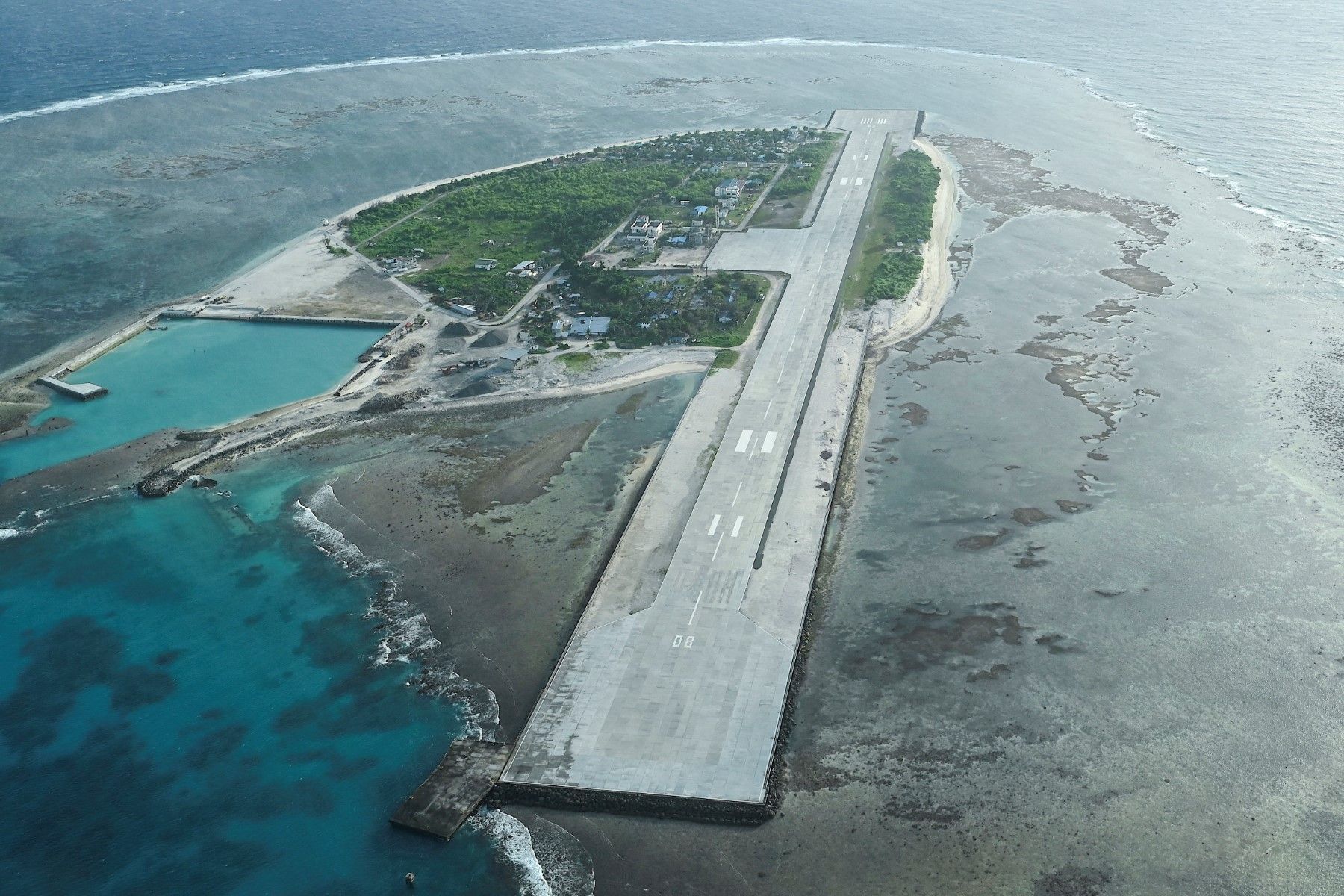DOTr to spend P300M for new Pag-asa Island port project, says solon
At A Glance
- Makati City 2nd district Rep. Luis Campos Jr. said the Department of Transportation (DOTr) will allocate P300 million for the construction of a new sheltered port on Pag-asa Island in the West Philippine Sea (WPS) to further spur development in the heavily disputed area.
 Pag-asa Island (AFP)
Pag-asa Island (AFP)
Makati City 2nd district Rep. Luis Campos Jr. said the Department of Transportation (DOTr) will allocate P300 million for the construction of a new sheltered port on Pag-asa Island in the West Philippine Sea (WPS) to further spur development in the heavily disputed area.
Campos, a vice chairperson of the House Committee on Appropriations, says the new funding is itemized in the DOTr’s Maritime Infrastructure Program for its proposed 2025 budget.
“The P300 million will bring to P2.6 billion the cumulative funding for new infrastructure projects in the Kalayaan Island Group,” he said in a statement on Sunday, Sep. 1.
In October last year, House Speaker Martin Romualdez visited Pag-asa where he vowed to develop the entire Kalayaan Island Group.
Romualdez was even quoted as saying that the area has the potential to become a tourist destination like the famous Maldives Islands.
“Following the Speaker’s visit, Congress has since earmarked P1.5 billion to further extend Pag-asa’s 1.3-kilometer runway to accommodate bigger aircraft, plus P800 million for a sheltered port on smaller Lawak Island, both in the 2024 General Appropriations Law,” said Campos.
With a land area of 37.2 hectares, Pag-asa lies 518 kilometers west of Puerto Princesa City in Palawan. The island is the largest landmass in the Kalayaan Island Group, which has an aggregate land area of 83.89 hectares spread over seven islands.
Included among these islands is the Ayungin Shoal (Second Thomas Shoal), Balagtas Reef (Irving Reef), and Rizal Reef (Commodore Reef).
According to Campos, the Philippines has been fast-tracking infrastructure projects in the Kalayaan Island Group to encourage civilian settlements there.
This is seen as a response to China’s artificial island-building in the larger Spratly Archipelago which, according to studies, have negatively impacted fisheries in the immediate area of the reclamation sites.